The Welsh Group 8 Shows: Genius Loci Exhibition, Oriel Canfas
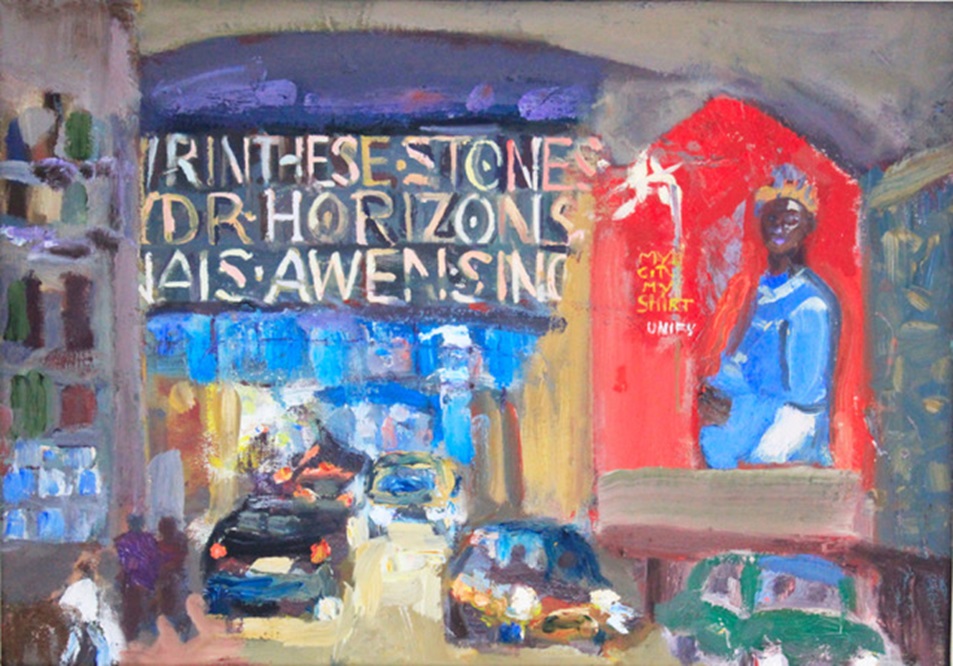
Artists have always responded to the profusion of shapes, colours and textures found in nature. They have also responded to something that is beyond the mere surface of things.
In the landscape there is often a quality that defies description but is undoubtedly present; this is sometimes referred to as ‘Genius Loci’ or spirit of place. Is this quality created by the natural world or does the artist’s emotional reaction bestow unique significance to certain places?
In the latest of this year’s shows by The Welsh Group, opening at Cardiff’s Oriel Canfas on the 2nd July, five artists offer their own responses to this theme.
Susan Roberts: Figure in the landscape
We all have our favourite places. Somewhere we go back to time after time, to reconnect with our past or recharge our spirit to face the future.
What if we could share that connection with place and at the same time connect with others?
That is what ‘Figure in the landscape’ aims to do, to connect us with the land and with each other and to do that through sculpture.
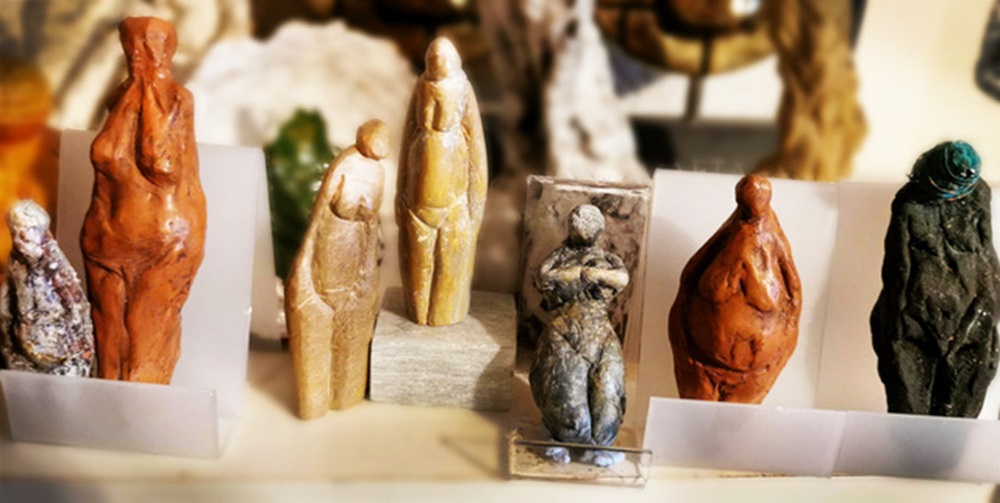
These days sculpture is usually seen in museums, galleries or as large statements in public spaces but some of the earliest figures were small enough to be held in the hand.
We call them goddesses, but we don’t really know what they were.
But one thing is sure, made thousands of years ago, they still resonate.
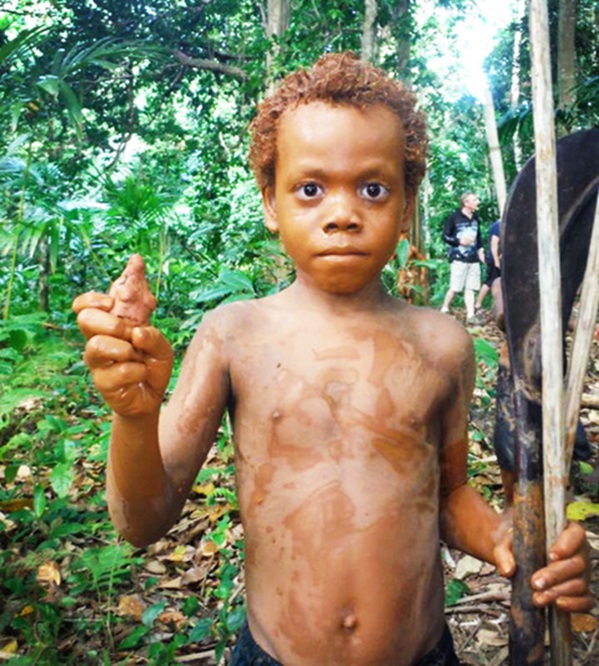
For over ten years Susan Roberts has been visiting her favourite places and placing figures she makes for others to find.
All she asks is that they take them to their favourite place and record it with a photograph.
Chris Evans: Scarring the Hills
These images are a visual representation of the anthropocene landscape of the abandoned slate quarry at Dinorwic, Caernarfonshire which has been afforded World heritage status.
Walking through the quarry is to experience the magnitude of the quarry as it stretches across the mountain. It is majestic, awesome.

The remains of the quarry can be regarded as one massive sculpture sublime in its vastness. It represents an area of the destructive and paradoxically creative forces of man on the environment.
To walk through the quarry is to walk in the footsteps of the quarrymen, to experience a time of the industrial revolution and mining in Wales with all the political wrangling around the development of Trade Unionism to combat exploitation and deprivation of the workers.
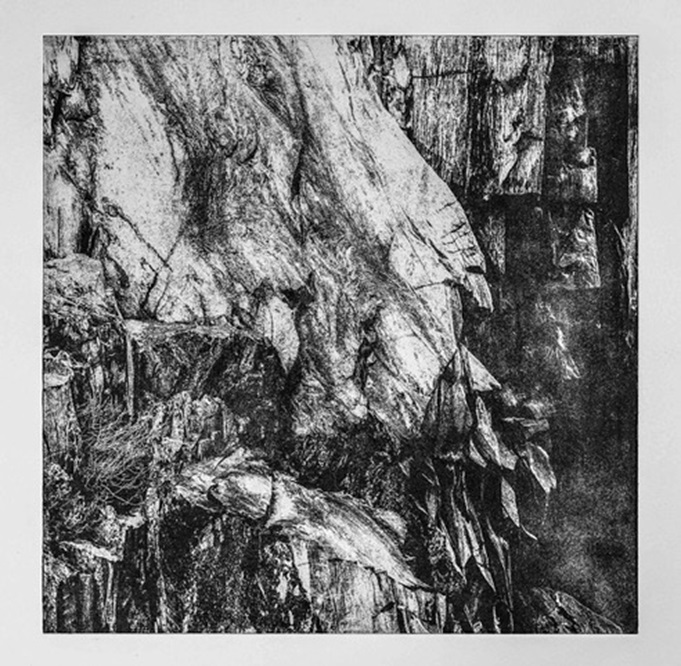
The larger images captivate the size and extent of the quarry whilst the smaller are photo etchings of the detailed rock structure and convey what the quarryman saw and worked with.
Creating the photo etchings is to mirror the quarry workers act of working with the stone.
It was then and yet now.
Angela Kingston
In 1969 an old long barn was pulled down. Four houses were built on the site, and so our story began – a new house and a garden of rubble for us to cultivate.
Llantwit Major has a history of St Illtyd, therst place of learning in Wales and a monastic farm in Bishop’s Palace Field, adjacent to our garden.
An archaeological dig revealed the foundations and remains of the monastic farm, pottery and other relics, now on display in the National Museum of Wales Cardiff.
On an excavation of a 9 ft. hole in the corner of our garden (lovingly called ‘The Mine’) the only treasures were clusters of limpet shells – diet of the monks? Now housing a weeping willow.
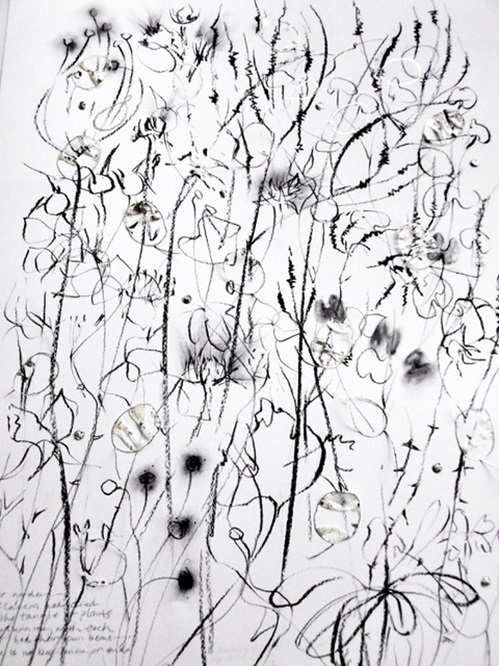
I often wonder what went before, what lies beneath? The two surviving trees were a hawthorn, still thriving, and an elderberry, a white ghost.
Beginning with a playing area for our young family, gradually and over time, with children growing, trees were planted,owers grew, grass was set. Flowers were always part of my work – watching them grow, live and die.
Covid came – conned to our house and garden, I started painting the flowers as they appeared.
Aware of climate change and the need for a green canopy, I began a new series of work on our trees – Ginkgo Biloba’s history of survival, Silver Birch’s splitting bark and Sycamore’s samaras waiting to drop.
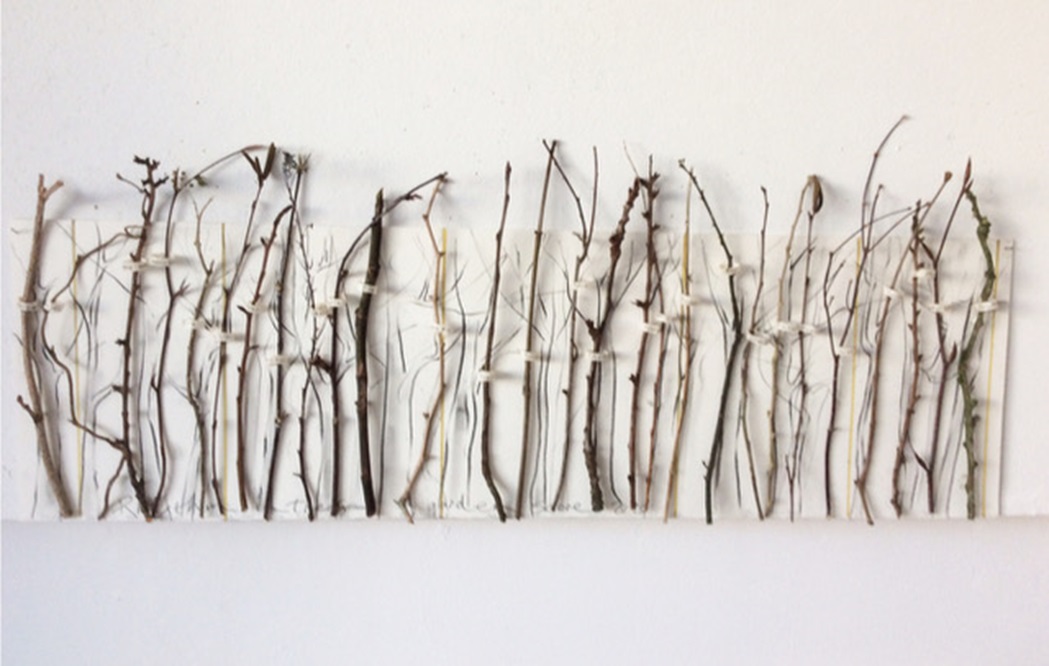
The garden was our sanctuary. Starting too, in 2020, making installations from gardens, ephemeral art, aeeting beauty, taking on a new form.
There is an expectancy in the garden – living, dying, emerging. What has been? What is now? What is to come?
Veronica Gibson
The key themes of Seamus Heaney’s poem, Digging, resonate with me – work, labour, craft, family ancestry and identity. Digging symbolises hard work, search and discovery.
Written in the summer of 1964, it tells the story of Heaney’s writing process and inspiration.
My connection to land and place stems from my childhood exploring and playing in the countryside as well as visiting my Irish grandparents, both from farming families, in London.
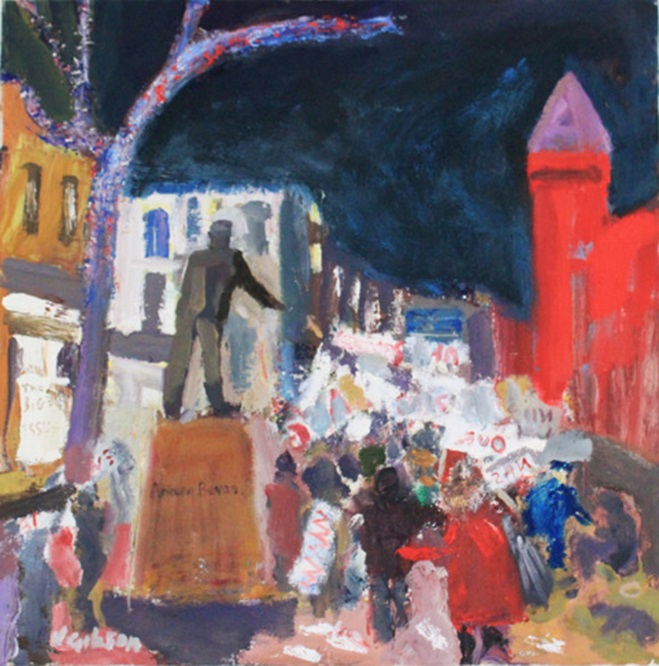
Having relocated to Wales in 1983 I have questioned my choice of places to live. One in particular was a village in the Taff Merthyr Valley.
I loved that place and painted endlessly on the hillside. That was the beginning of my reconnection to painting landscape.
Was it the farming or the remnants of the Taff Merthyr Colliery and miners that was so influential?
The place felt real and familiar. Mining symbolised digging, unearthing, uncovering, discovering and exploring. This is where I began my inward journey.
After ten years I moved to Brecon, home of a thriving arts community.
Missing the grittiness of the valleys I got myself an allotment, a link to the home I had just left. And this is where I continue to draw and paint. Again, it is to me a real environment primal, necessary, essential.

My most recent paintings are a reflection on aspects of culture that I want to comment on. I lived in Cardiff when first moved to Wales. To me it is a gritty place built on graft with an indomitable cultural and national identity.
Chris Griffin: Hillsides
Anyone living in the South Wales Valleys would be familiar with hillsides. They are the ubiquitous backdrop to everyday life. The ever-present is often taken for granted.
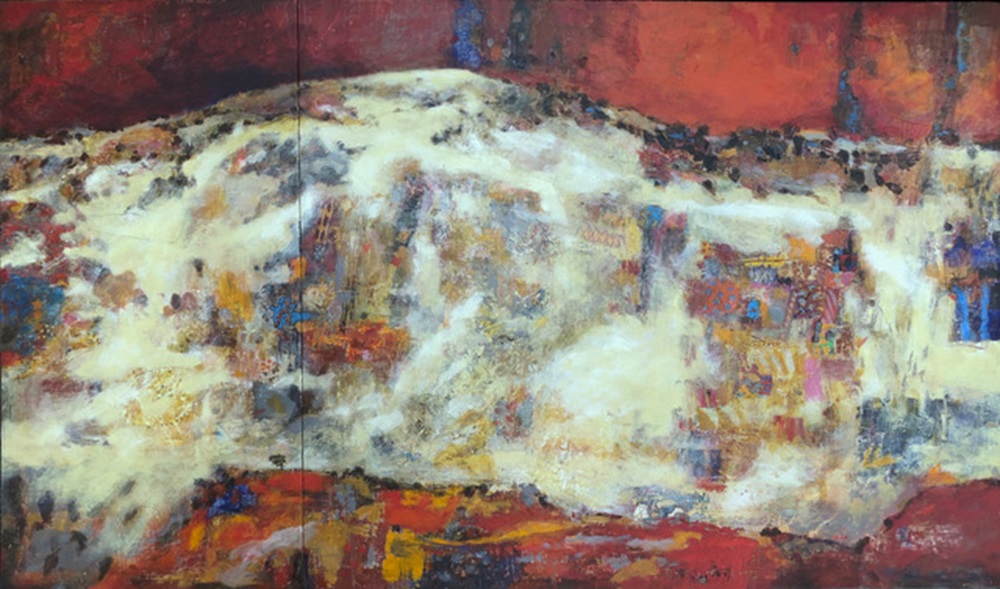
For me these slopes expose a visual history with their scars of industry, the seemingly random shapes of natural erosion and the footprints of human activity.
I borrow the shapes, the textures and rich colours and play with these qualities until I arrive at a starting point for my artwork.
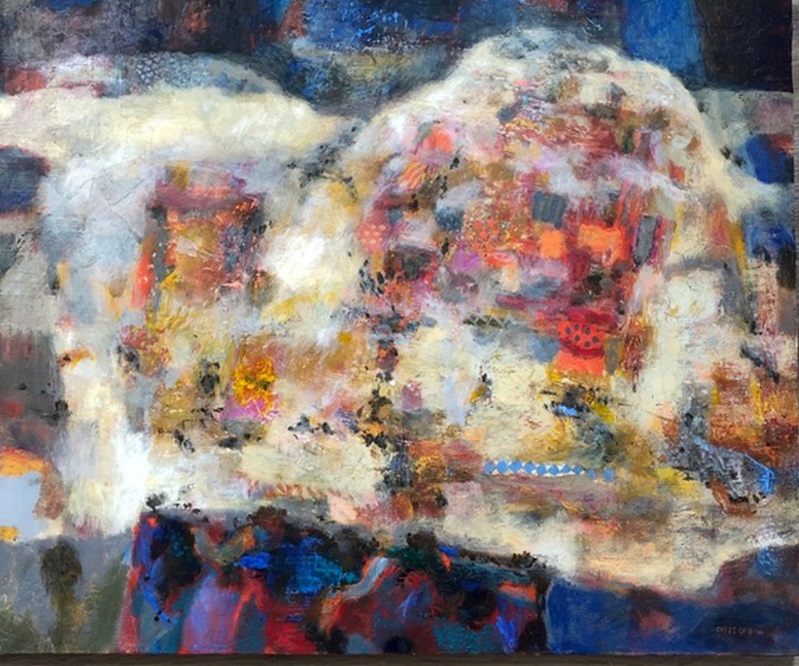
The work is finished when there is a symbiosis, an interdependent bond, between my image, the paint and the picture plane.
Genius Loci will be at Oriel Canfas (Cardiff) from 2nd to 20th of July.
Support our Nation today
For the price of a cup of coffee a month you can help us create an independent, not-for-profit, national news service for the people of Wales, by the people of Wales.




